Why is Restorative Yoga perfect for athletes?
Stop depleting yourself with all those lunges and planks and start recovering properly after a long run with Restorative Yoga
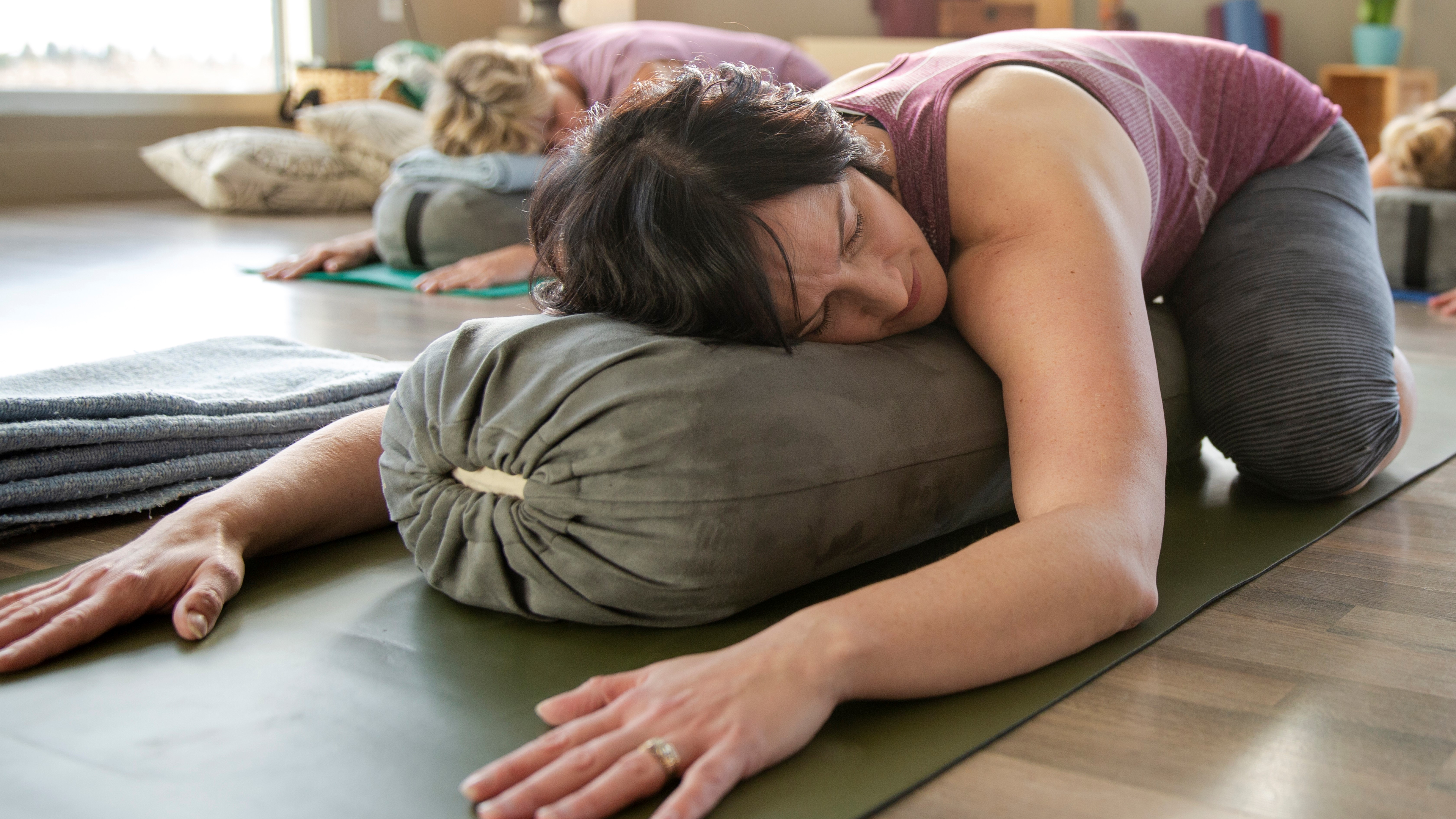
In my 15 years of teaching yoga, I’ve observed an interesting phenomenon. The people who could really benefit the most from the relaxation and stress-reducing benefits of yoga tend to instead seek out the most sweaty, rigorous classes on the schedule. I taught for many years in Vail, Colorado, where every other person who walked in the door of the studio was an elite athlete of some kind, and time after time I saw the same thing. Folk who’d just kicked off their trail running shoes after a 20-miler, biked 100 miles at high altitude or skied all day would come to a briskly-paced yoga class to recover. What they’d actually do was spend an hour wincing and groaning their way through lunges and downward dogs, coming out of every pose early to rest and leave class more exhausted and miserable.
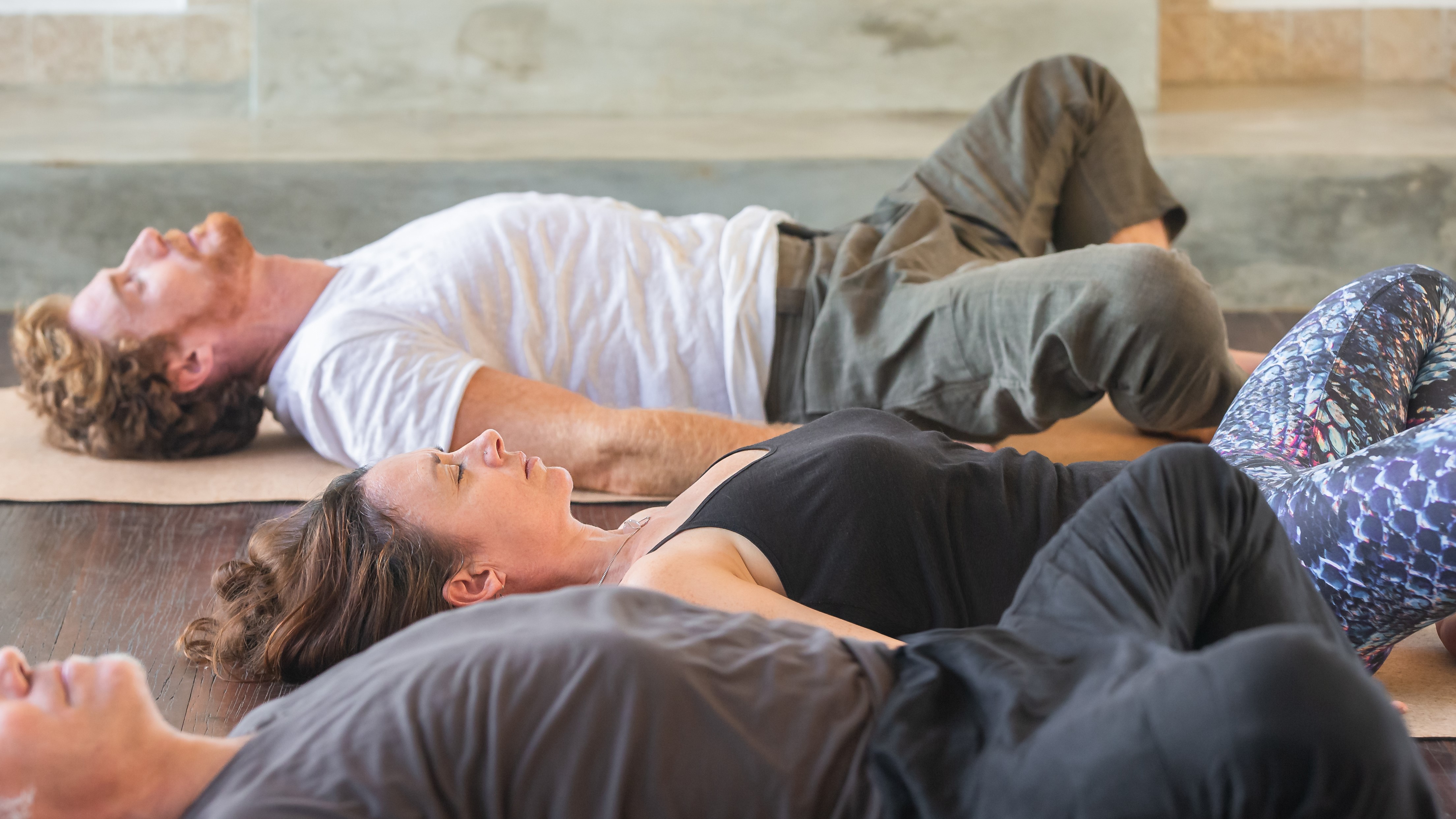
After a few years of seeing athletes further depleting themselves on the yoga mat, I decided something needed to change. So I started teaching Restorative Yoga, a practice entirely devoid of standing postures and planks, where the students have the opportunity to really recover. Though lots of people assume Restorative Yoga is only for pregnant woman and old people, I found that once athletes tried Restorative Yoga, most of them realized pretty quickly that it was exactly what they needed. After a while, I had the entire US men’s rafting team showing up three times a week, one Olympic skier and more ultra runners than you can shake a trekking pole at.
In a world where a lot of people sit down a lot of the time, there’s certainly a need for dynamic yoga, and it’s easy to see why athletes seek out practices like Vinyasa Yoga that move their joints through a greater range of motion than their chosen sport and focus on deep stretching of overworked muscles. But if you’re actually seeking true recovery, I’ve become more and more convinced that Restorative Yoga is the best choice for athletes.
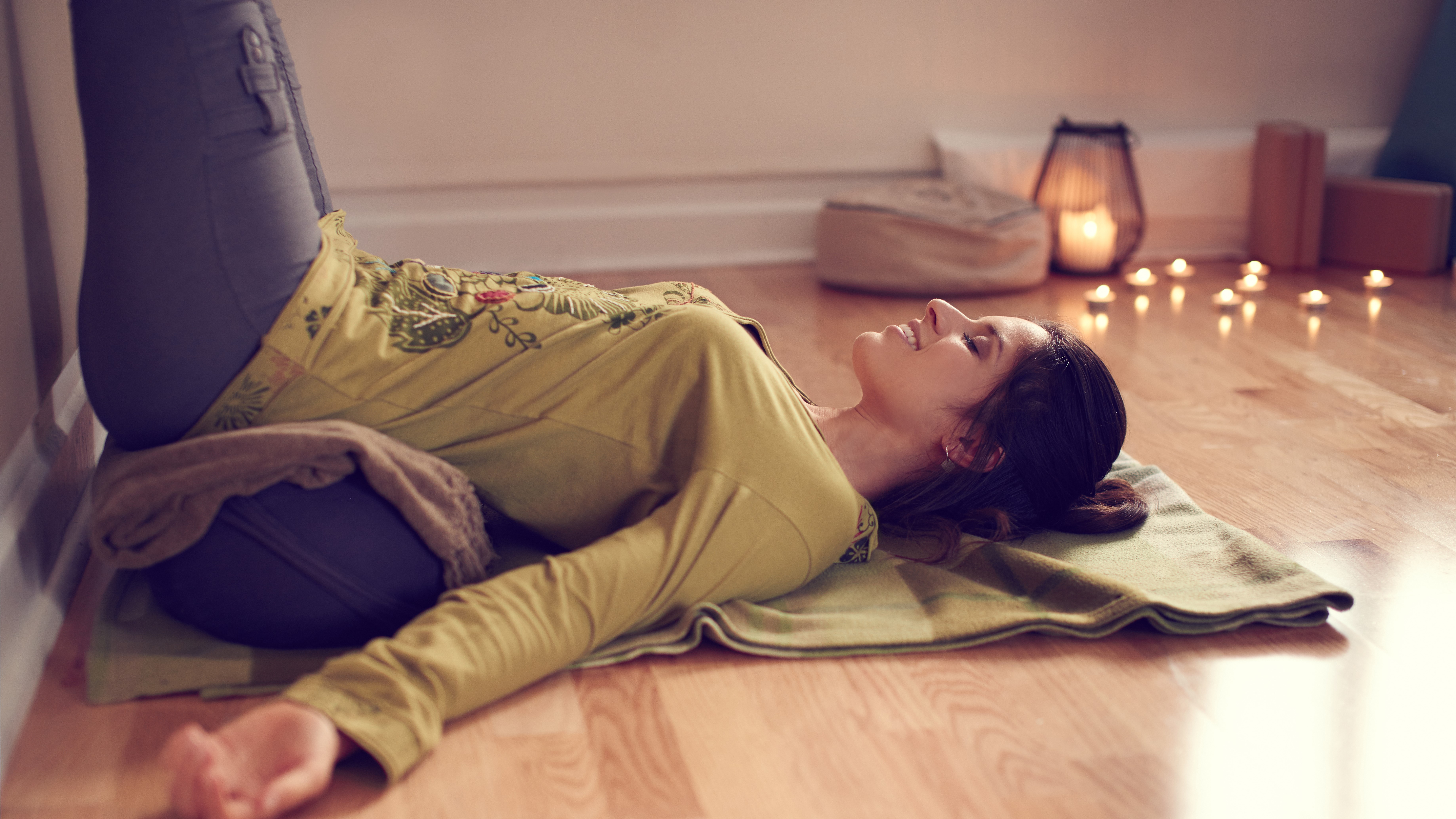
What is Restorative Yoga?
Restorative Yoga is a practice of deep relaxation, where you spend sustained periods of up to 30 minutes at a time in reclining poses, supported by props like bolsters and blankets. Your teacher will often use visualization techniques, guided meditations and gentle breathing exercises to help you combat the effects of stress. It’s not an ancient practice; it was devised in the 1970s by Judith Hansen Lasater, author of the book Relax and Renew. Because of its gentle nature and the use of props, anyone can do Restorative Yoga regardless of age, mobility or experience.
All of my Restorative Yoga classes begin with at least 20 minutes spent lying down with a pillow under your knees. After that, we’ll do some gentle reclining twists, side bends and back bends where your body is propped up on a bolster. Don’t expect to stand up or get out of breath in this practice. You probably won’t feel any of that deep stretch sensation you might expect from yoga, or seek out after a long run – after all, that sensation is your nervous system bracing itself against an unfamiliar movement, and we want to leave the bracing for the trail.
While it may not hold the same aesthetic or calorie-busting appeal as more vigorous forms of yoga, Restorative Yoga may offer athletes some serious benefits and it’s growing in popularity for this reason – a 2021 study revealed it to now be the third most popular style of yoga.
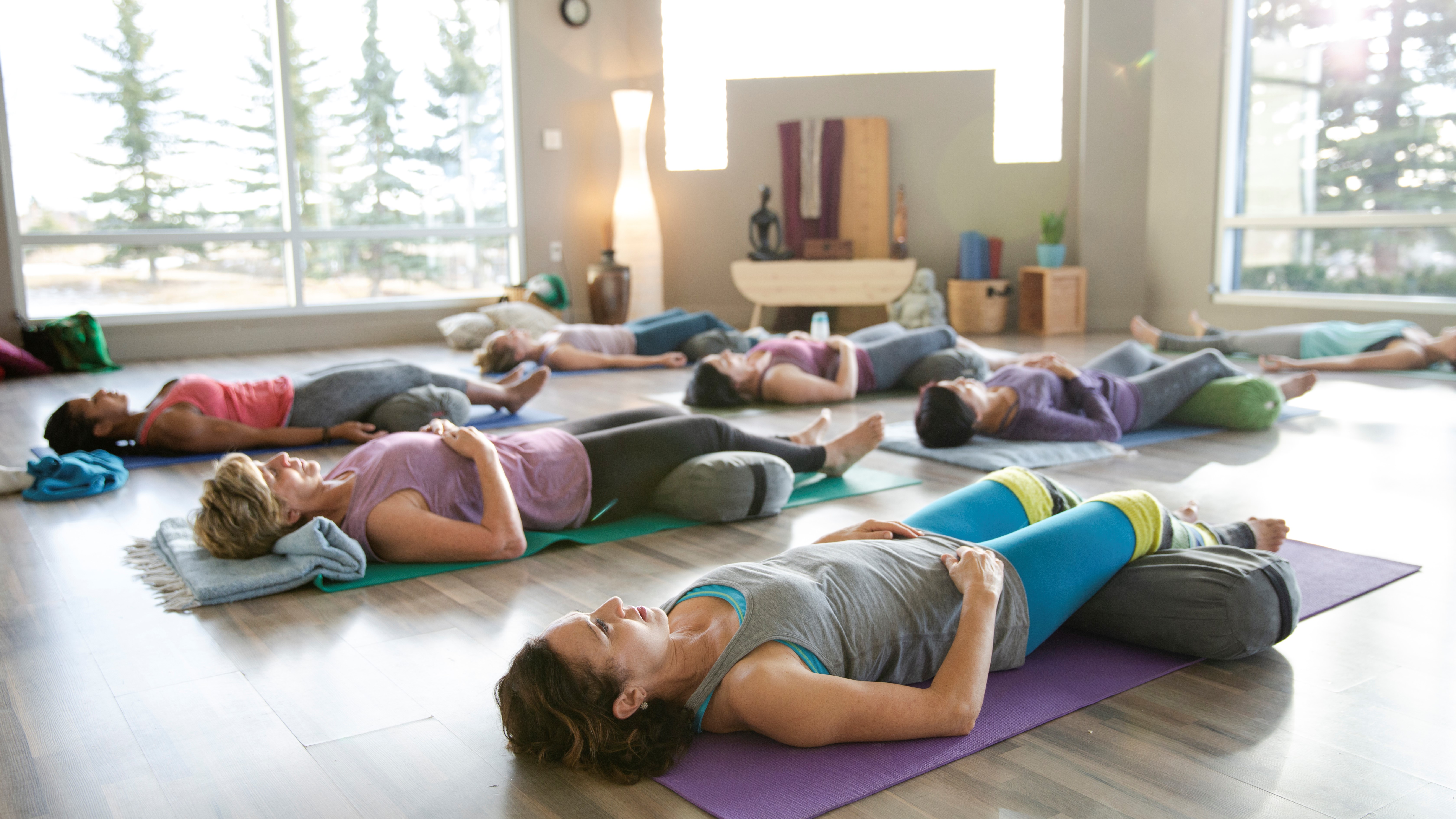
What are the benefits of Restorative Yoga for athletes?
As I explain in my book Restorative Yoga for Beginners, there is very little in the way of research into Restorative Yoga specifically, and what studies there are on yoga generally are small and don’t often explain what type of yoga they’re studying. Basically, yoga is widely open to interpretation and variation and therefore a difficult subject to study in a controlled environment.
All the latest inspiration, tips and guides to help you plan your next Advnture!
That said, a 2018 study in the International Journal of Yoga Therapy showed that the rate of adequate attendance was higher for cancer survivors who practiced Restorative Yoga over other types – perhaps because it’s more accessible, maybe because they found it to be more effective than other styles, or probably, both. We all know that proper recovery is vital to peak performance and because Restorative Yoga is, effectively, a relaxation technique, we can find a lot of scientific research that points to its effectiveness.
1. Reduces stress
Relaxation has been shown to reduce stress hormones, which can be an unfortunate side effect of competitive athletics, or even just being a competitive person. According to the Mayo Clinic relaxation techniques like Restorative Yoga lower your heart rate and blood pressure and improve your mood. Further, relaxation techniques activate the alpha and theta brain wave states, which are indicated with lowering stress and decreasing anxiety.
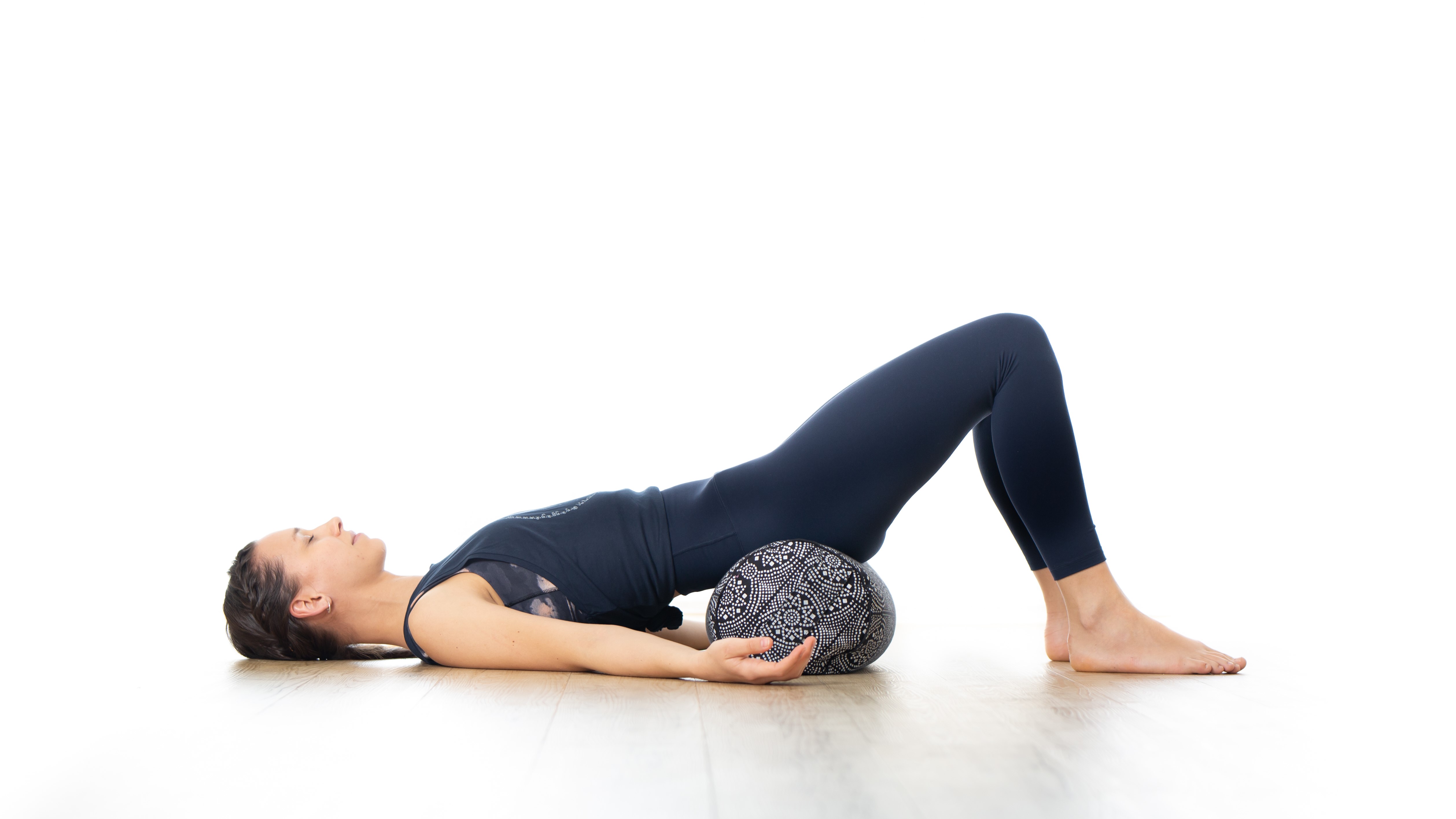
2. Helps performance
The Mayo clinic further suggests that relaxation techniques improve your ability to concentrate and boost your problem-solving ability, which can be really beneficial on a technical trail run, and further improve your mood and sleep quality to reduce fatigue and aid recovery. Alpha brain wave activity has been shown to improve athletic performance due to its association with deep concentration. According to a 2019 article in Psychology Today, alpha brainwaves may facilitate creative breakthroughs which you can harness to set new times or alter your approach.
3. Lets your muscles recover
Few would argue that stretching isn't important, but deep stretching places stress on your muscle fibers that you might not actually want after a long run or ride. Restorative Yoga poses support your body in such a way that your muscles can truly relax, then adds a very small amount of traction to rehydrate the muscles without causing any further fatigue or even the tearing that eccentric contractions incur.
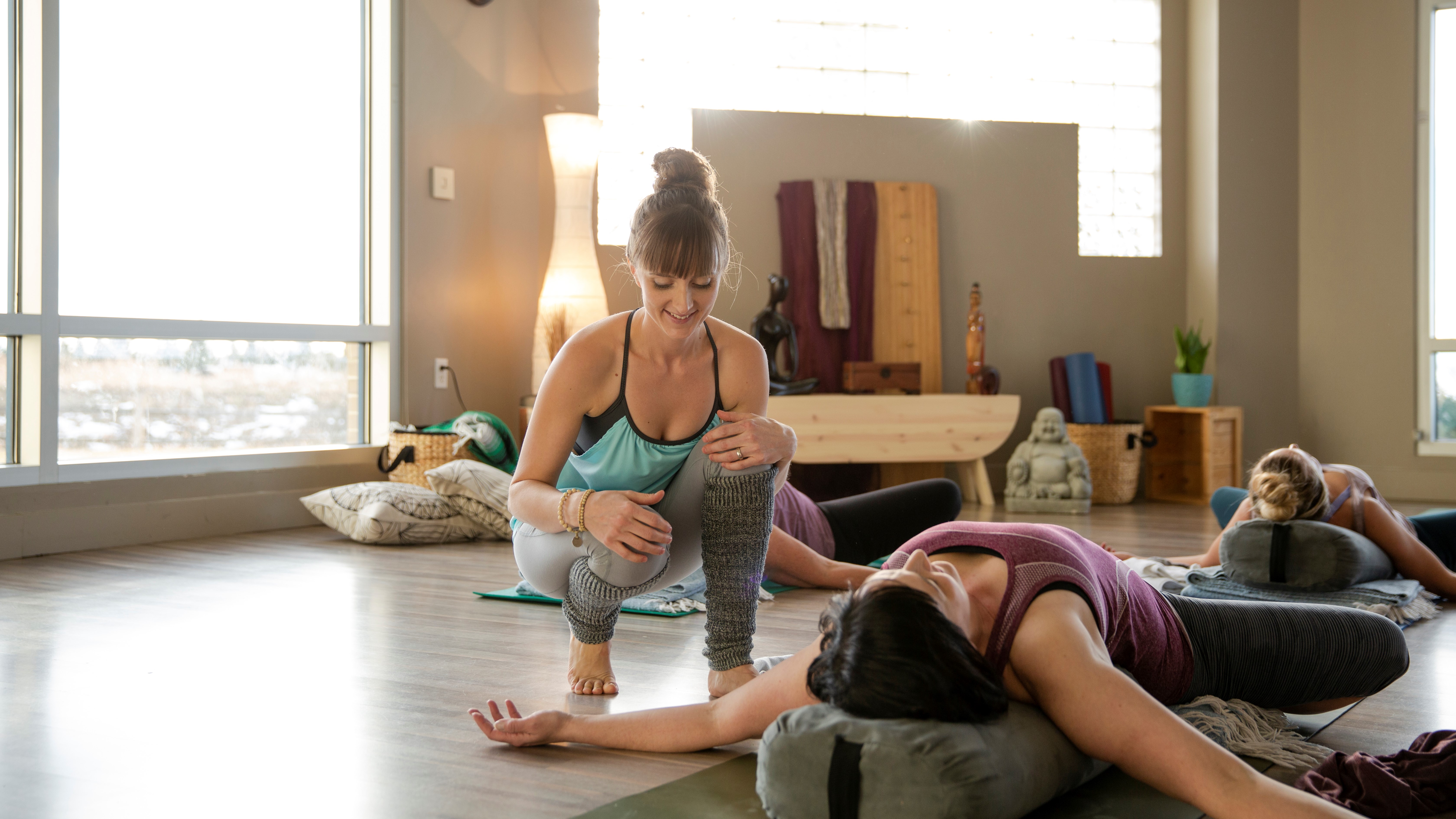
4. Improves respiration
Learning how to breathe properly is fundamental to athletic performance. Shallow breathing is common these days, even amongst hikers and runners, because we spend so much time sitting in chairs and hunched over screens. A2016 study by the University of Auckland shows poor posture can provoke anxiety, back pain, brain fog and poor digestion. The book Breath in Action asserts that simply paying more attention to your breath can help. In Restorative Yoga, we soften the respiration muscles through reclining in supported postures, then bring awareness to the breath to deepen it without strain.
5. Aids digestion
When a stressful event triggers the “fight or flight” response, your sympathetic nervous system interferes with the enteric nervous system’s ability to digest food, which can be further impaired by race day nerves and replacing proper nutrition with running gels and other active nutrition options. Deep relaxation stimulates your parasympathetic nervous system, otherwise known as the “rest and digest” function. A 2019 article in Harvard Health associates techniques used in Restorative Yoga like progressive muscle relaxation and visualization with gastrointestinal relief.
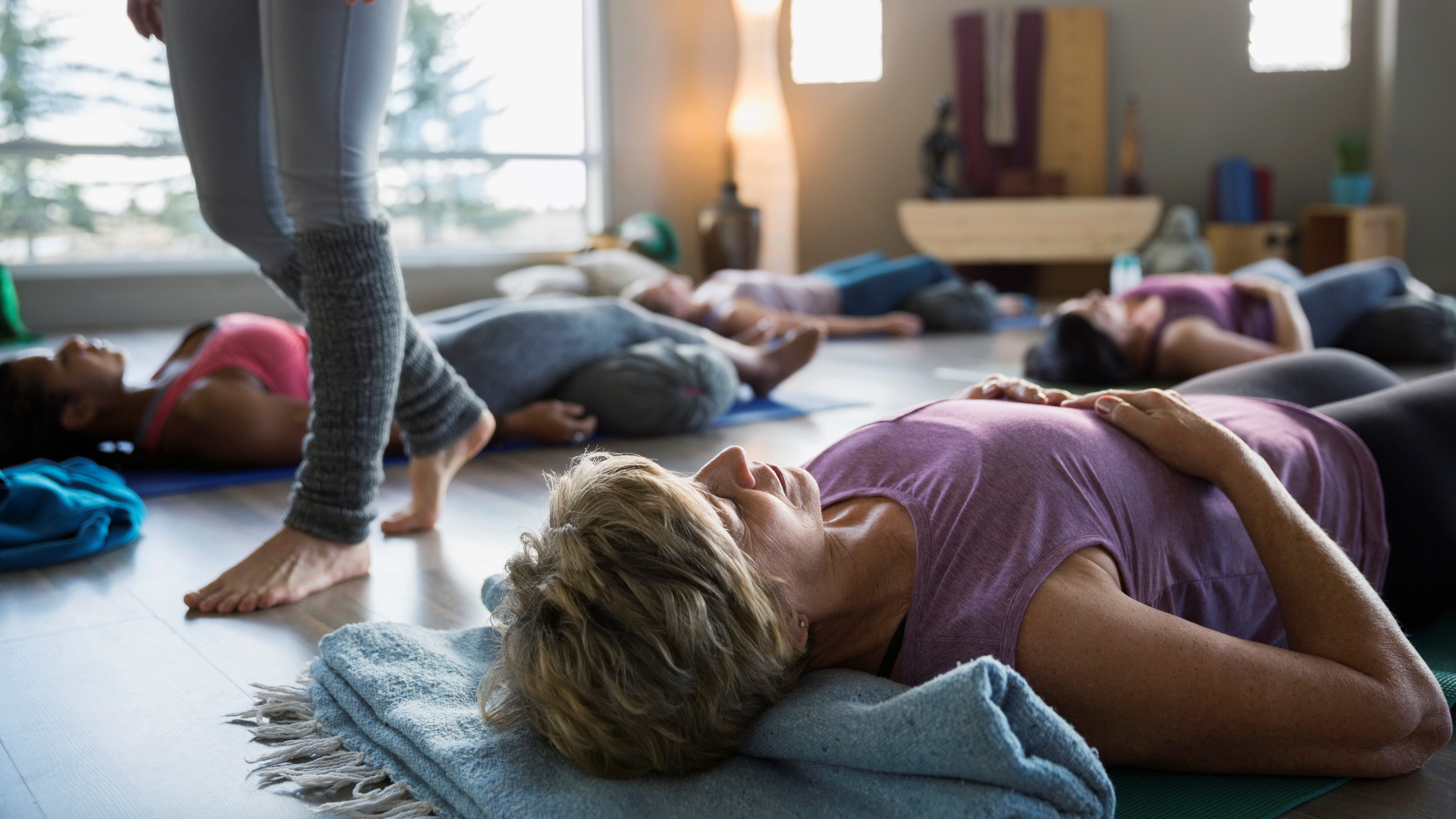
6. Helps relieve pain
Even beyond the obvious reasons for pain amongst athletes, such as shin splints, plantar fasciitis and sprained ankles, causes of chronic pain include stress, poor posture, inadequate breathing and inflammation. A 2010 review cites at least short term reduction in chronic and acute pain when relaxation techniques were applied.
Julia Clarke is a staff writer for Advnture.com and the author of the book Restorative Yoga for Beginners. She loves to explore mountains on foot, bike, skis and belay and then recover on the the yoga mat. Julia graduated with a degree in journalism in 2004 and spent eight years working as a radio presenter in Kansas City, Vermont, Boston and New York City before discovering the joys of the Rocky Mountains. She then detoured west to Colorado and enjoyed 11 years teaching yoga in Vail before returning to her hometown of Glasgow, Scotland in 2020 to focus on family and writing.

